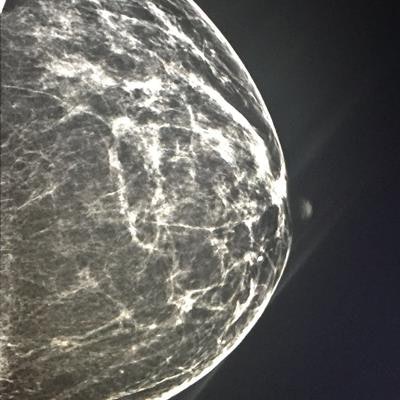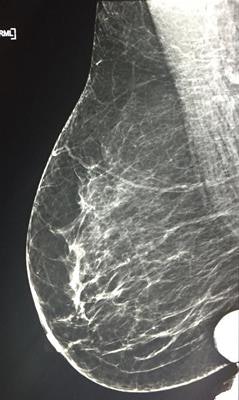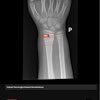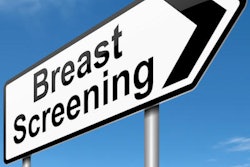
How well is mammography performed in Malta? No one knows for sure because image-quality studies haven't been conducted -- until now. New research found that the average reject rate for the nation fell within acceptable levels, but there is still room for improvement, particularly at individual centers.
A research team led by Nicole Mercieca from the medical imaging department at Mater Dei Hospital in Msida, Malta, found that the recorded average reject rate across the country for mammography images fell within acceptable levels. But calculation of reject rates at individual centers revealed unacceptable readings.
"This research has demonstrated that reject analysis is an easy and inexpensive method of gaining image quality-related information. It has been demonstrated that although the national mammography reject rate conforms to levels set by the European guidelines, quality is not consistent in all [centers]," they wrote in their study published in Radiography (6 August 2016). "Factors contributing to improper rates and poor image quality should be controlled to aim at having a reject rate of at most 3%."
The history
In 2009, Malta was ranked as having one of the highest breast cancer mortality rates in Europe, with 34.4 deaths per 100,000 women. Mammography is known to be a sensitive area of radiology due to the difficulty associated with positioning and the nature of the examination itself.
Rigorous quality assurance (QA) and quality control (QC) are essential to achieve high-quality images. A commonly used QC test is reject analysis, which reveals deficits in service and consequently brings about a reduction in rejected images, doses, and financial burden.
The Malta National Breast Screening Program was launched in 2009 and invites women ages 50 to 60 for free breast screening every three years. Also, several private clinics offer mammography, both to symptomatic and screening patients. However, QC programs are only in place in some mammography centers.
Mercieca and colleagues sought to identify the national mammography reject rate for radiographers in Malta, an initiative that had never been undertaken before. The researchers wanted to assess the reasons that led to image rejection, compare rejection rates between different mammography technologies, and assess the factors that affected rejected rates.
All 12 mammography centers in Malta were invited to participate, with eight of these available for participation -- four state-owned facilities and four private clinics.
The researchers sent out questionnaires to all heads of the centers with questions that included variables such as radiographers' experience, condition of employment (i.e., full or part time), qualifications, and the mammography system used.
The second phase involved reject analysis. Radiographers were informed of the research before it commenced.
For film and computed radiography (CR) mammography, a data collection sheet was used to monitor all projections performed. Rejects were documented on a sheet developed by the American College of Radiology that served to obtain both the number of rejected images and rejection causes.
A "waste box" was allocated for disposal of film-screen mammography rejects. With CR systems, rejects were retrieved from the computer system. With digital mammography, a "reject analysis" report, including reject rates, rejected projections, rejection causes, and the total number of images, was retrieved from the machine itself. Radiographers then exported anonymized, rejected images, which were analyzed by the researchers.

Room for improvement
The researchers prospectively collected a total of 2,291 images over two weeks with 60 rejected images being recorded. This accounted for a national reject rate of 2.62%, which is within European mammography guidelines (less than 3%). However, analysis of the individual centers revealed rates ranging from 0.82% to 8.8%.
The six main reasons for rejection are listed below:
- Positioning
- Patient motion
- Artifacts
- Light image (improper exposure)
- X-ray equipment failure
- Improper detector exposure
The most common cause of rejection was patient positioning (71.6%), regardless of the type of mammography technology used.
The researchers found no difference in reject rates among film-screen, CR, and digital mammography centers. However, they found a significant association between different centers and rejection causes, according to the authors.
"Indeed, whilst positioning was cited with all three, a greater incidence of rejects due to equipment-related problems was noted in [digital mammography]," they wrote.
Artifacts were the most common in film-screen mammography, while exposure-related rejects were most common in CR mammography. The researchers found no significant difference between radiographer experience levels and rejected images. However, radiographer qualifications and employment conditions -- part time or full time -- were both associated with a significant difference in rates.
"Hence, one can generalize that radiographers with no specific mammography qualifications will reject more images than those who have obtained some formal and recognized qualification in mammography, whilst radiographers practicing mammography on a part-time basis will have a significantly higher reject rate than their counterparts who practice full-time mammography," Mercieca and colleagues wrote.
They also found a significant difference between centers applying rejection criteria and centers that did not refer to any criteria before rejection.
Due to the research findings, all radiographers at Mercieca's institution have undertaken a refresher course focusing mainly on positioning and grading of mammography images, she told AuntMinnieEurope.com.
"Findings of the study were also shared with some of the other centers participating in the study, and I am planning on continuing to diffuse the findings to all clinics," she said. "It is very important that all radiographers working in mammography are aware of the factors that might influence image quality and reject rates."
No further research is planned, but it would be very interesting to investigate whether any corrective action applied results in improvement in reject rates, she added.



















